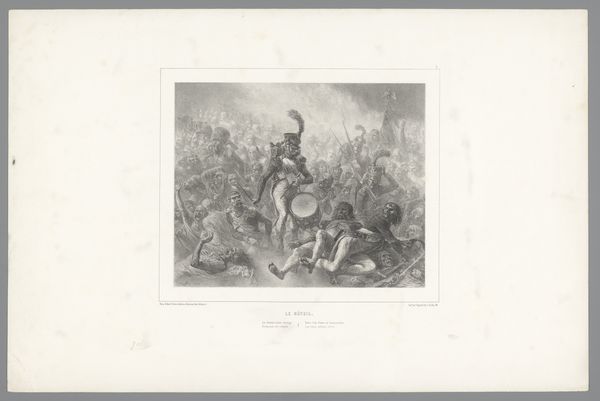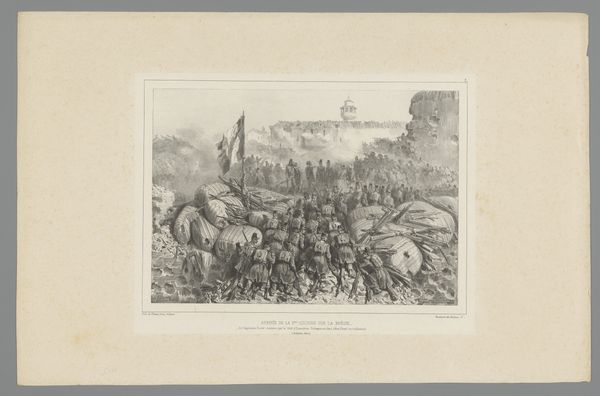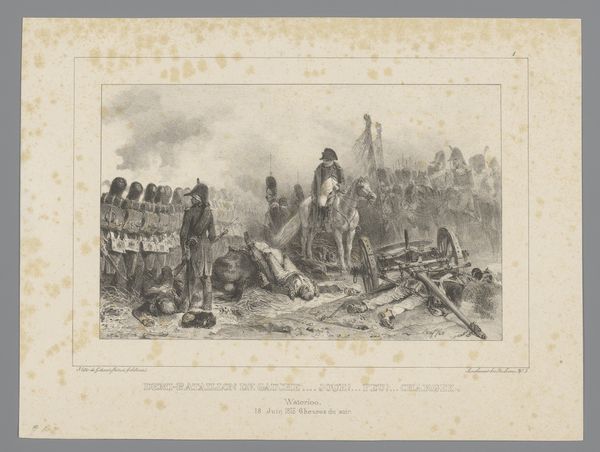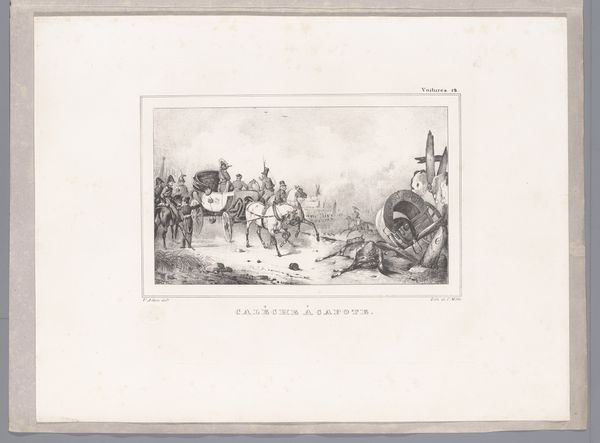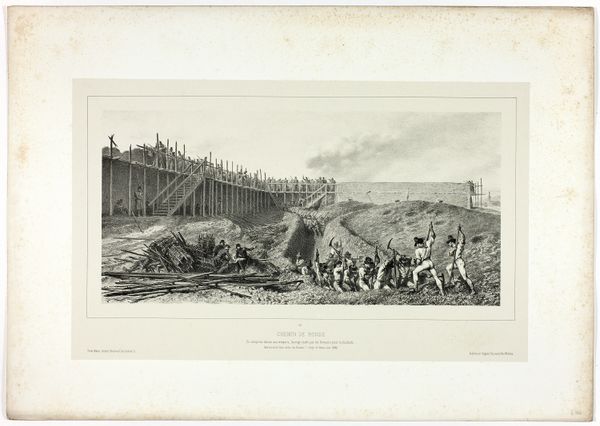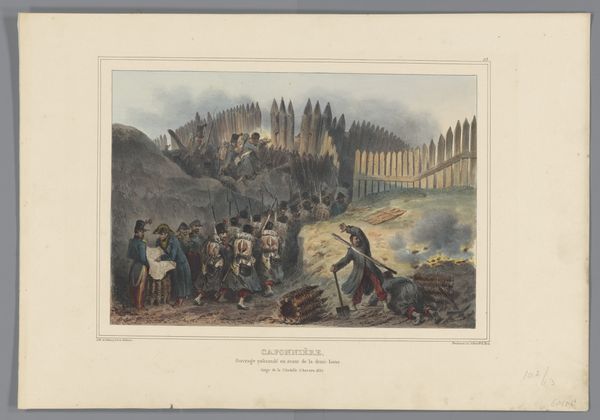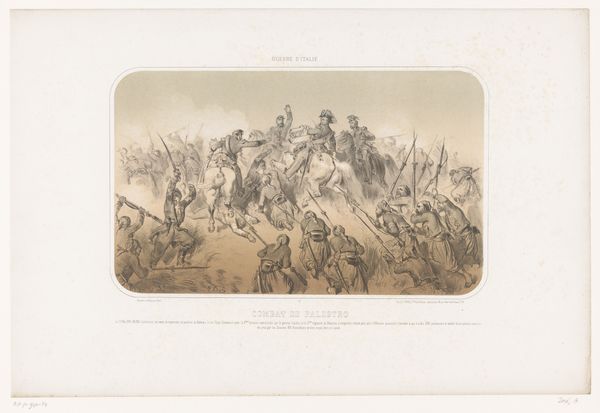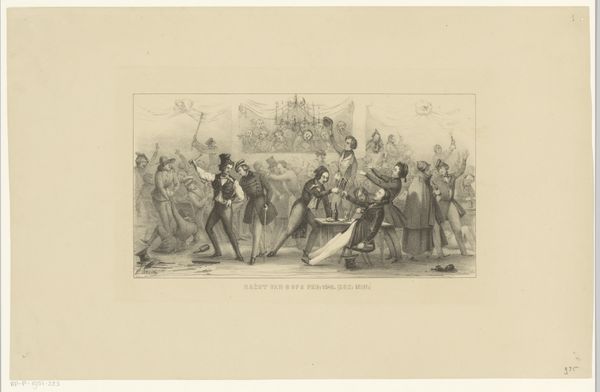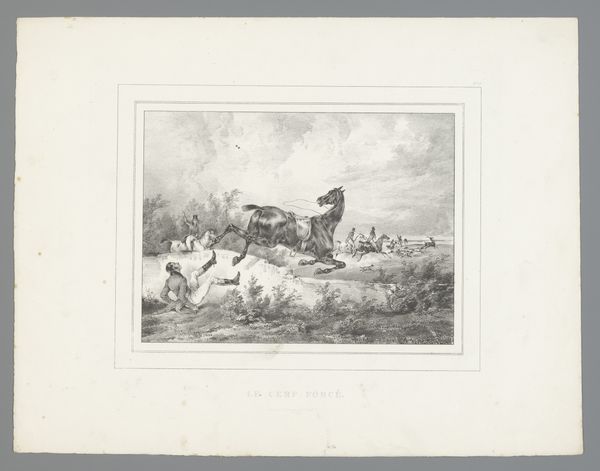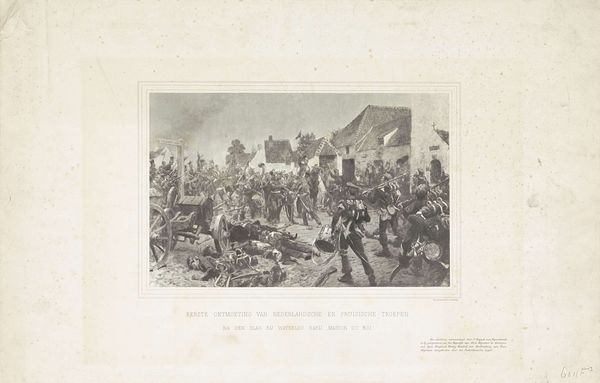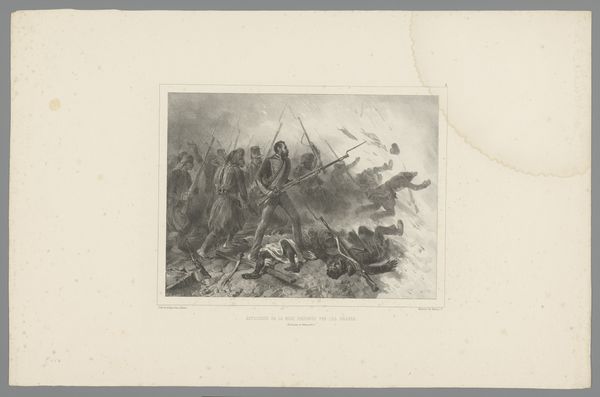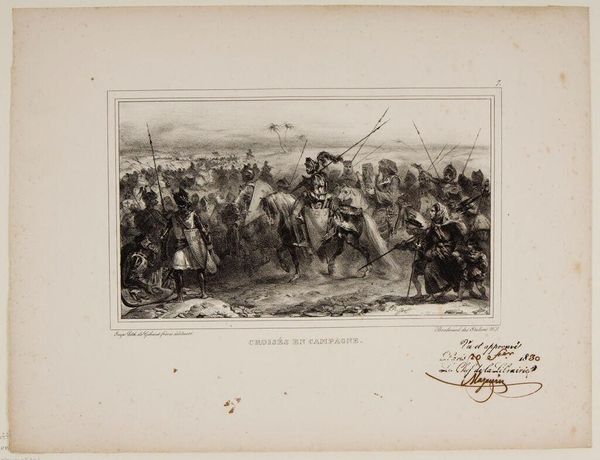
print, engraving
#
narrative-art
# print
#
old engraving style
#
landscape
#
figuration
#
romanticism
#
line
#
history-painting
#
engraving
Dimensions: height 373 mm, width 562 mm
Copyright: Rijks Museum: Open Domain
Auguste Raffet made this lithograph in 1832, depicting soldiers passing through a rough opening in a barricade. Lithography, unlike painting or sculpture, is a printmaking process, ideally suited to the mass production of images. Here, the stark black lines, made possible by the lithographic crayon and the flat surface of the printing stone, give a sense of the grit and harsh realities of military life. Consider the labor involved: not only the physical toil of the soldiers, but also Raffet’s work, drawing the image in reverse with a greasy crayon, before the application of acid, ink, and finally the press itself. The choice of lithography suggests that Raffet wanted his image to reach a wide audience, beyond the confines of a gallery or salon. It's a powerful reminder that art can be a tool for communication, persuasion, and even propaganda, reflecting the social and political currents of its time.
Comments
No comments
Be the first to comment and join the conversation on the ultimate creative platform.
